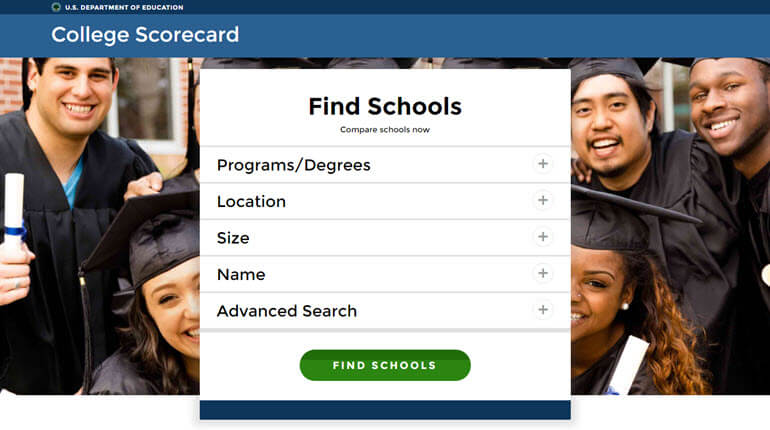If you’re an administrator or marketing specialist in higher education, you’ve heard of the College Scorecard.
An initiative from the U.S. Department of Education, this scorecard is designed to show students and their families information about higher education institutions that would assist them when making decisions about where to pursue a degree. The College Scorecard highlights key data such as tuition costs, graduation and employment rates, the average amount borrowed by students to attend and student loan default rate.
To better serve its users, Google incorporated the College Scorecard information in search results, and in September 2016, expanded the information it shows for a particular school. In addition to tuition and acceptance rate, Google users can see graduate rates, post-college earnings information and total enrollment at a glance from the search results page without visiting the College Scorecard site. Keep in mind, however, that these figures only represent the undergraduate statistics for an institution; graduate programs are not displayed on the Google search results page.
Though seen as a step up in transparency for the actual costs of schools, there are a few caveats with the College Scorecard information. For one, it only applies to the undergraduate population of a given college or university. Metrics like graduate rate, cost and post-graduate earnings would, no doubt, be different if graduate information was incorporated. (Graduate program information can be viewed only through the College Scorecard site.) On the College Scorecard platform itself, there is no way to compare schools of interest. Also, tuition costs do not reflect any financial aid or scholarships the individual student may be eligible for. Additionally, the “time to graduation” may be longer at institutions with more part-time students, as the current metric is the number of students who graduate in six years or less from an undergraduate program.
What Your Higher Education Institution Can Do
Because College Scorecard is a federally backed program, there isn’t much institutions can do to alter or prevent this information from appearing in Google search results. Perhaps the most important guideline is to double-check your school’s information to ensure the statistics reported are accurate.
While college and universities can’t control the content displayed, it is important to understand how the additional information might impact a prospect’s view of the institution. Circle your marketing team, internal and external, to review what exactly prospective students see when considering your institution. This audit can reveal any weak spots in the institution’s image: An effective marketing strategy may help you better manage it.
Austin Williams is an award-winning, full-service Long Island advertising agency that dares to be outcomes driven. Our in-house services include research, brand identity, campaign development, media planning and buying, website development, digital marketing, content creation and public relations. We are a financial advertising agency, healthcare marketing agency, higher education marketing agency, and professional services marketing agency.










